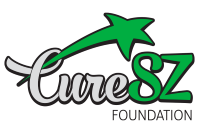
סטיבן ראש, MD, פרופסור חבר לפסיכיאטריה קלינית
According to the National Institutes of Mental Health (NIMH) in 2017, 10.6 million adults in the United States had serious thoughts of committing suicide, 2.8 million made suicide plans, 1.3 million attempted suicide, and 47,173 died by suicide. The World Health Organization estimates that 1 million people across the word die by suicide each year at a rate of 3 people every 2 minutes.
Death by suicide in those with schizophrenia occurs at a rate much higher than that of the general population, sometimes reported as high as 13,000 per 100,000 people with this disorder compared to 13 per 100,000 in the general population. It is the largest cause of premature death in this population. The risk of death by suicide is highest in the first 2 years after the onset of schizophrenia and occurs more often in males, those with co-occurring depression and substance use disorders and those with a history of suicide attempts. Often, the focus of treatment in schizophrenia is reduction in hallucinations and delusions, but clearly, an important part of any treatment plan involves suicide prevention strategies.
Prevention of suicide in schizophrenia requires breaking down barriers around the stigma of mental illness and bringing discussions of this topic into the light, whether with clinicians, family members, or support groups. This is a challenging task given the stigma that already exists, even amongst those affected by this brain disorder. It has been reported that most people who commit suicide give definite warnings about their intentions and often do so in ample time before an attempt. Additionally, a majority of people who are suicidal are ambivalent about death. This contradicts stigma that suicide occurs in people who never discuss it, without warning and who are intent on ending their lives. The high risk of suicide in persons with schizophrenia mandates that we must discuss this topic openly, without bias and without fear of negative consequences. Increased awareness of suicidal thinking is, in fact, associated with decreasing the risk of completed suicide.
אסטרטגיות מניעה אוניברסליות חייבות לכלול הפצת מידע מדויק באמצעות כלי תקשורת והרחקת מידע לא מדויק ומוטה שדוחק לשוליים אנשים עם נטייה להתאבדות. גישה מוגבלת לאמצעי התאבדות קטלניים ביותר (כגון אקדחים) הוכחה כמפחיתה את שכיחות ההתאבדות ומחייבת, כחברה, אנו דוגלים בחוקים ותקנות המגנים על אזרחינו הפגיעים, גם לנוכח ביקורת נוקבת מצד הִתנַגְדוּת.
Selective strategies must target those at risk for suicide and require broad screening of these populations and having frank and open discussions about suicide. We must educate and train all members of society to manage issues of suicide in the same vein as interventions such as cardiopulmonary resuscitation (CPR), a widely known treatment for cardiac arrest with education provided in many sectors of society not limited to health care professionals. Imagine if raising suicide awareness is established as a requirement in the same way various occupations and activities require CPR training and what this could do to reduce completed suicide.
אסטרטגיות אישיות המערבות חולים עם סכיזופרניה חייבות לכלול מעורבות משפחתית, קהילה ורופא. יש לחנך פסיכיאטרים לגבי היתרונות הברורים של קלוזפין בהפחתת הסיכון להתאבדות בסובלים מסכיזופרניה (Meltzer et al, 2003), שכן מחקרים מראים שטיפול זה אינו בשימוש נרחב. שיתוף פעולה קהילתי, שבו צוותים רב-תחומיים זמינים כדי לספק מגוון תמיכה לאלו עם סכיזופרניה, כגון טיפול בקהילה אסרטיבית (ACT) צריך להיות טיפול סטנדרטי ונגיש יותר לכל מגזרי החברה. חינוך משפחתי, אימון מיומנויות חברתיות וטיפולים התנהגותיים קוגניטיביים, אילו הם נגישים בקלות לכל המטופלים, ללא קשר לביטוח וליכולת לשלם, ישפיעו באופן דומה על מניעת התאבדות.
לסיכום, עלינו, כחברה, להכיר בסיכון הגבוה להתאבדות בקרב אלו בקהילות שלנו החיים עם סכיזופרניה כצעד ראשון לקראת מניעה. עלינו להפחית את הסטיגמה סביב הפרעה מוחית זו והתאבדות ולהיות מודעים לגורמי סיכון. עלינו לתמוך בחקיקה וברפורמה בבריאות. אולי יותר מכל, עלינו לפעול כקהילה כדי להקיף את הכת הזו באוכלוסייתנו בתמיכה ולהגביר את הגישה לטיפול יעיל.
הפניות
איגוד שירותי בריאות הנפש בזמן אשפוז לבני נוער לאחר אשפוז פסיכיאטרי עם סיכון למוות בהתאבדות. Fontanella et al; JAMA Netw Open. 2020;3(8):e2012887.
טיפול קלוזפין לאובדנות בסכיזופרניה: ניסוי בינלאומי למניעת אובדנות (InterSePT). מלצר ואח'; קבוצת המחקר הבינלאומית למניעת התאבדות. Arch Gen Psychiatry. 2003. ינואר;60(1):82-91
מנבאים של התאבדות בזמן האבחון בהפרעת ספקטרום סכיזופרניה: מחקר כולל של 20 שנה באונטריו, קנדה. Zaheer et al (בעיתונות); Schizophres. https://doi.org/10.1016/j.schres.2020.04.025
מניעת התאבדות. Sher, L. QJM. 2004. אוקטובר;97(10): 677-680.
מודעות להפרעה ולסיכון התאבדות בטיפול בסכיזופרניה: תוצאות הניסוי הבינלאומי למניעת התאבדות. Bourgeois M et al. אמ. ג'יי פסיכיאטריה. 2004. 161:1494-1496
ניהול סיכון התאבדות בחולים עם סכיזופרניה. Kasckow J, Felmet K and Zisook S. CNS Drugs. 2011;25(2): 129-143
הִתאַבְּדוּת. (2020, ספטמבר). אוחזר מאתר https://www.nimh.nih.gov/health/statistics/suicide.shtml#part_154969

